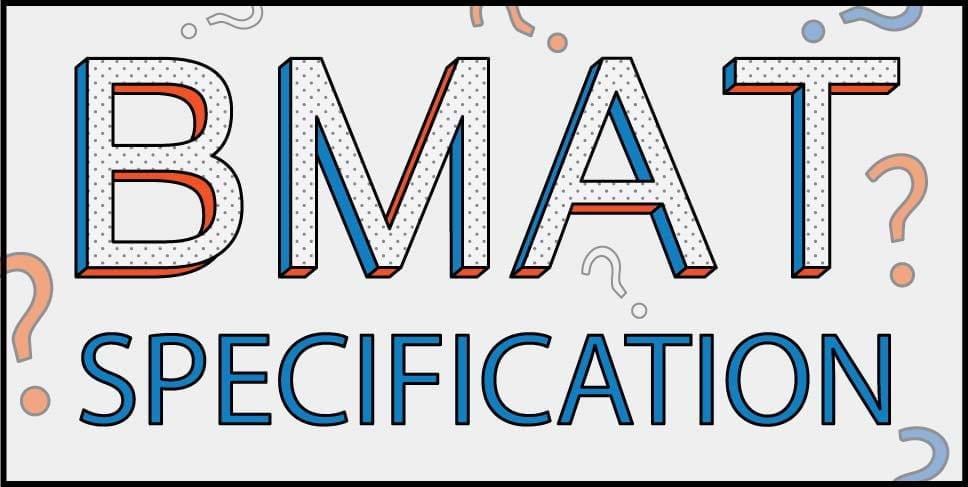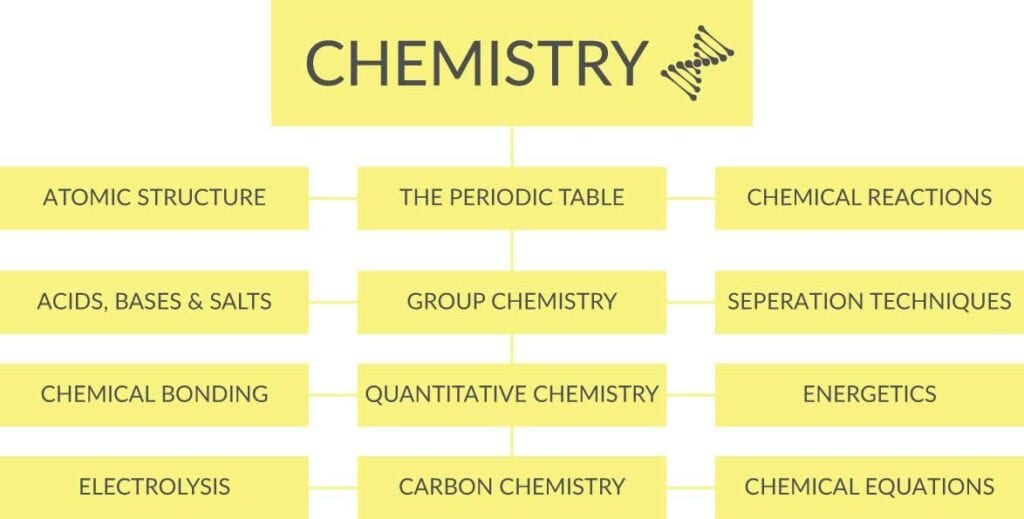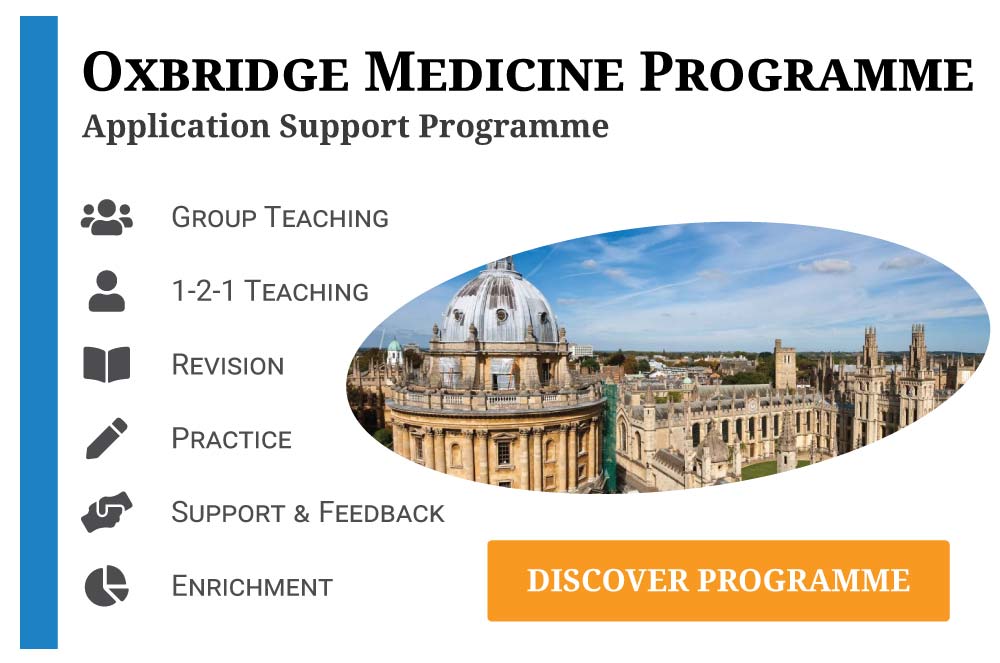As of 2024, the BMAT will no longer operate for Medicine applicants. Applicants for all UK medical schools will be required to sit the University Clinical Aptitude Test (UCAT) for 2025 Entry. Find out more in our BMAT/UCAT 2025 Guide.

The BMAT test can be a daunting prospect. The unknown is always far more daunting than the known, but luckily for you, we teach you everything in the BMAT Specification.
How do we fix this?
We learn exactly what is in the BMAT specification, so the only daunting part is knowing what you have left to revise. Luckily for you, we’ve put together a concise list of the worst (or best, depending on your positivity) to come.
BMAT Specification
Section 1 – Thinking Skills (Previously known as Aptitude and Skills)
Section 1 covers the following;
- Problem Solving – this is mostly use of numerical figures and algebraic operations to solve problems (surprise surprise). If you’re a physics student you’ll likely be innately great at this section!
- Critical Thinking – this is all about being presented with a logical argument, then identifying reasoning, assumptions and conclusions within that argument.
Data Analysis & Inference – the use of information skills (writing, comprehension, statistics and graphical tools), data interpretation, analysis and scientific inference to reach a conclusion.This is no longer a part of the BMAT Section 1 specification. The whole change is specified below.
BMAT 2020 Specification Change To Section 1
In April 2020, the BMAT specification was updated for the 2020 exam the test going forwards. The change only affects Section 1 of the BMAT, leaving Section 2 completely unchanged.
There are five changes that were made;
- BMAT Section 1 has gone from 35 questions -> 32 questions.
- BMAT Section 1’s specification no longer includes Data Analysis and Inference.
- Candidates will face 16 Problem Solving questions and 16 Critical Thinking questions (previously 10 Problem Solving and 10 Critical Thinking).
- Critical Thinking questions will now test “matching arguments” and “applying principles”, in addition to the question styles mentioned on the previous specification.
- All Section 1 questions will now have 5 answer options, with only 1 correct answer and 4 distractors.
With the number of questions being reduced from 35 to 32 and the time allowed for this Section remaining the same, this is actually a positive for candidates sitting the BMAT. You’ll have just under two minutes per question now, which makes Section 1 less time-constrained.
The specification has changed slightly so that it no longer included Data Analysis and Inference questions. These questions previously made up 12 questions of the total 35 in Section 1. Data Analysis and Inference questions would involve candidates being presented with a long passage and 3 – 5 related questions. This is no longer a part of the BMAT.
The number of questions for Problem Solving and Critical Thinking have been upped to account for the removal of Data Analysis and Inference.
Matching arguments and applying principles questions require candidates to match answers with a passage of text. They test a candidates ability to identify the reasoning or principles behind an argument, then apply them in another context to demonstrate understanding.
What does this mean for your BMAT preparation?
As mentioned, these changes are mainly positive for candidates sitting the BMAT. To make sure you are preparing with the right questions, you can look out for the old Data Analysis and Inference questions by avoiding the long text questions in Section 1 of past papers. It may still be useful to attempt them as they test many similar skills to the rest of the exam, however, you will not face this specific question type in the real BMAT exam.
The change does impact working through BMAT past papers in timed conditions. We would recommend that you simply remove questions that no longer fall under the BMAT Section 1 specification, and to adjust the timing accordingly so you still get a realistic performance.
Section 2 – Scientific Knowledge and Applications
This is the big one. Section 2 tests on a more academic level. The level of knowledge is stated to test around GCSE standard, but past papers and applicants tend to see inclusion of AS level questions also. A good score in Section 2 represents an aptitude and capacity for higher learning in a medical or veterinary field.
Although this is not a completely exhaustive list, these are revision points that you should most definitely touch on, especially if you feel any are weaker spots!




Frequently, candidates for the BMAT test do not study physics at GCSE or AS level. Naturally, without having touched on the subject for a few years, it’ll be the one that needs the most brushing up on. Although Chemistry and Biology do tend to have a far greater breadth of topics covered (as seen by the list above), physics does consistently trip up candidates.
A look through past papers has given us an indication of what to expect or prioritise (we can only guess so much!) when it comes to the physics questions;
- Electricity – this comes up almost every year so make sure you’re charged (sorry) with electrical knowledge!
- Motion and energy – although delegated to #2, this topic is another that crops up almost every year so make sure you cover it.
Though other topics should still be covered; these are the two to nail.
Section 3 – Essay section
Section 3 doesn’t really have a specification that can be easily followed. You will be given a selection of questions that you can choose from; these are generally based on topics of social, medical or scientific interest.
There’s no real pattern to what comes up so can’t set yourself up to have an incredibly in-depth knowledge of a single subject. The best way to practice for this section is to delve deep into past papers and answer every question. This will give you a familiarity with the structure of the question and timing available for the answer.
The main considerations a marker will use when scoring your answer is:
- The degree to which you address the question correctly
- Organise your thoughts fluidly
- Structure your answer coherently
- Express yourself through good use of English
Though Section 3 is the most ambiguous of the 3, it can definitely be worked on. Here’s a slightly more in-depth guide on how to do well in Section 3.









